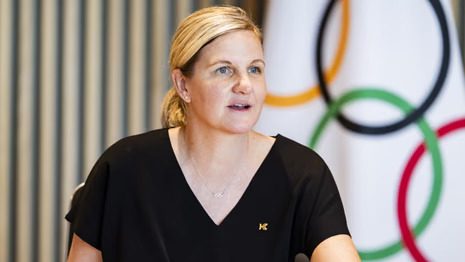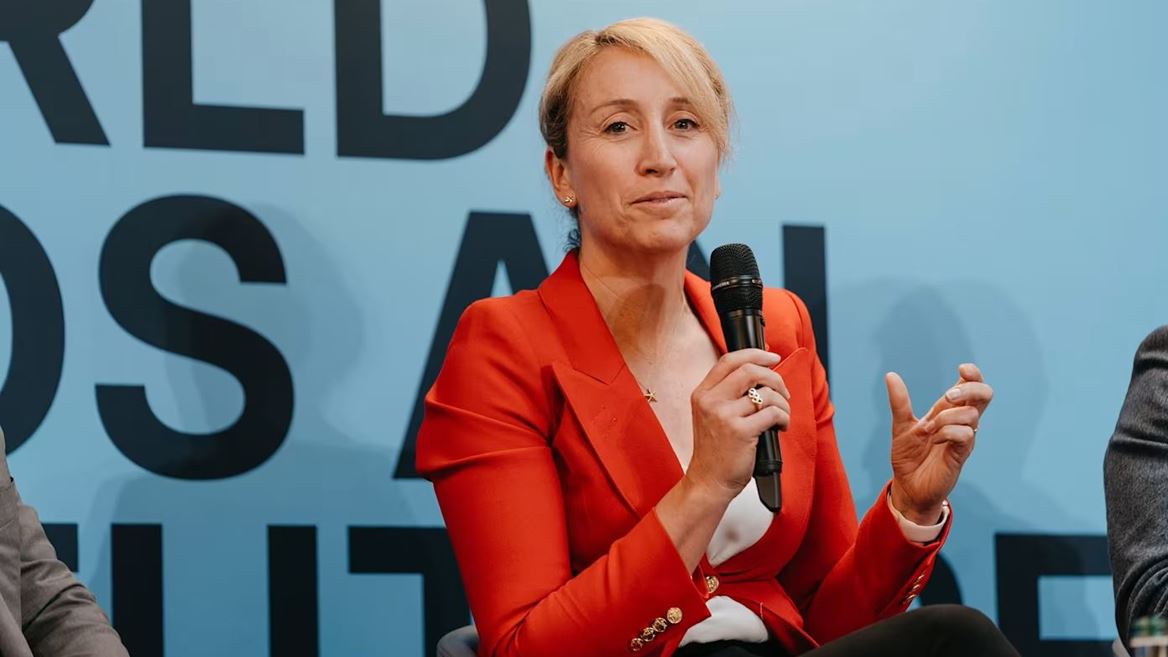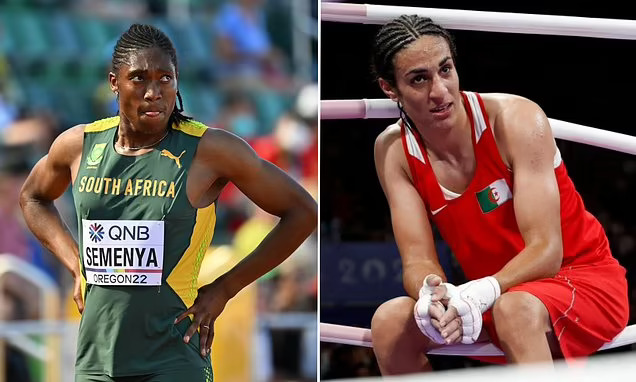
The International Olympic Committee is moving toward a gender eligibility policy that could ban transgender women and some cisgender women with naturally high testosterone levels from competing in women’s sports, according to recent reports – a move critics say is rooted in political pressure rather than credible science.
The developing plan has drawn global scrutiny, with advocates warning that the proposal represents an unprecedented expansion of gender policing on the world’s largest athletic stage.
The proposal, now under review by the IOC’s medical leadership, is already drawing sharp criticism from athletes, advocates and researchers who say the policy would redefine womanhood through hormone thresholds rather than lived reality.
Dr. Jane Thornton, the IOC’s medical and scientific director and a former Olympic rower, presented the findings of what the committee described as a “science-based review” during IOC commission meetings last week, The Times reported. According to sources cited by the outlet, Thornton said scientific evidence suggested that physical advantages tied to “being born male” persist even after hormone suppression.

The review also reportedly recommended that athletes with Differences of Sex Development, or DSD, be included under the same restrictions. DSD refers to naturally occurring variations in chromosomes, hormones or reproductive development. The designation would include cisgender women who were assigned female at birth, raised as girls and identify as women, but whose hormone levels fall outside the IOC’s preferred range.
An IOC spokesperson confirmed that an update on the working group’s review was delivered, but emphasized that “no decisions have been taken yet.”
The policy could be finalized as early as February, ahead of the Milan-Cortina Winter Olympics, the Los Angeles Times reported.
While the IOC has framed its review as grounded in scientific evidence, experts say the research used to justify trans athlete bans has major limitations. A 2021 review published in Sports Medicine found no empirical basis for excluding transgender women from women’s sports. Another study, published in 2024 in the British Journal of Sports Medicine and funded in part by the IOC, found that transgender women may experience disadvantages compared with cisgender women, including lower oxygen capacity and reduced lower-body strength.
Critics say the IOC’s direction reflects a broader global push to restrict transgender participation in athletics, often under the banner of “protecting women.” But advocates argue that the proposed standards would disproportionately harm all women, not just trans women, by allowing sports organizations to question women’s legitimacy based on biological traits.
The potential move would also align the IOC with the political agenda of President Donald Trump, who has repeatedly called for genetic testing to determine athletes’ gender eligibility. During an August press conference about the 2028 Olympics, Trump said athletes would face “very, very strong” gender verification requirements and would be barred from competition if they “didn’t test appropriately.”
The administration also restricted visa access this year for transgender women seeking to enter the United States to compete in women’s sports. The Department of Homeland Security announced the rule change in August, describing it as a measure intended to “promote fairness” in athletics.
In February, Trump signed an executive order barring transgender student athletes from participating in girls’ and women’s sports at K-12 institutions. Although the order did not carry legal authority over national athletic bodies, the U.S. Olympic and Paralympic Committee and the NCAA adopted their own bans on trans women shortly afterward. Advocates say the IOC’s new direction suggests that international sports governance is increasingly influenced by U.S. political pressure.

Historically, the IOC allowed individual international federations to set their own policies for transgender inclusion. That approach emphasized sport-specific research and acknowledged the significant differences across athletic disciplines. But in June, IOC President Kirsty Coventry signaled a shift, saying the committee would move toward a unified gender eligibility policy to “protect the female category, first and foremost.”
Athletes and scholars argue that the phrase “protect the female category” has become a coded justification for excluding broad categories of women under the guise of fairness. They note that similar rhetoric was used in past controversies involving athletes such as Caster Semenya and Imane Khelif, both of whom faced scrutiny over their natural hormone levels.

Advocates warn that the consequences of the proposed policy would be far-reaching. Women with naturally high testosterone levels could face invasive testing, forced medical interventions or outright bans. Transgender athletes who undergo hormone therapy and meet existing guidelines could be excluded despite evidence showing they do not dominate competition.
Critics say the IOC’s actions risk reinforcing gender stereotypes and excluding women who do not conform to conventional expectations of femininity. They argue that human variation, the same diversity that fuels athletic excellence, is being reframed as grounds for suspicion.
The IOC has not provided a timeline for public release of the full review or its recommendations. For now, the organization has said only that further information will be shared in “due course.”
But as the committee approaches its next session, pressure is mounting. Athletes, advocates and researchers say the IOC has a choice to make, adopt an approach guided by inclusion and actual science, or cement a new era of exclusion in the name of “fairness.”
And for many critics, the question is no longer whether the IOC will make history, but what kind.